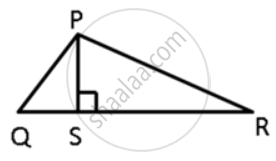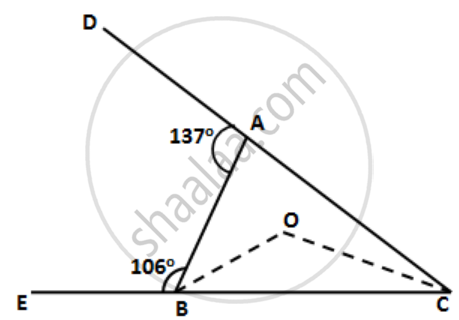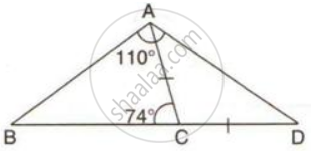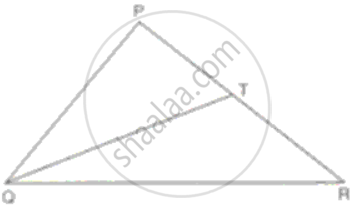Advertisements
Advertisements
प्रश्न
In ΔPQR, PS ⊥ QR ; prove that: PQ + PR > QR and PQ + QR >2PS.
उत्तर
In ΔPQR,
PQ + PR > QR (∵ Sum of two sides of a triangle is always greater than third aside.)
In ΔPQS,
PQ + QS > PS (∵ Sum of two sides of a triangle is always greater than third aside.) .....(i)
In ΔPRS,
PR + SR > PS (∵ Sum of two sides of a triangle is always greater than third aside.) .....(ii)
Adding (i) and (ii),
PQ + QS + PR + SR > 2PS
PQ + (QS + SR) + PR > 2PS
PQ + QR + PR > 2PS
Since PQ + PR > QR
⇒ PQ + QR > 2PS.
APPEARS IN
संबंधित प्रश्न
Show that of all line segments drawn from a given point not on it, the perpendicular line segment is the shortest.
ABC is a triangle. Locate a point in the interior of ΔABC which is equidistant from all the vertices of ΔABC.
Arrange the sides of ∆BOC in descending order of their lengths. BO and CO are bisectors of angles ABC and ACB respectively.

In the following figure ; AC = CD; ∠BAD = 110o and ∠ACB = 74o.
Prove that: BC > CD.
Name the greatest and the smallest sides in the following triangles:
ΔABC, ∠ = 56°, ∠B = 64° and ∠C = 60°.
Name the smallest angle in each of these triangles:
In ΔPQR, PQ = 8.3cm, QR = 5.4cm and PR = 7.2cm
In ABC, P, Q and R are points on AB, BC and AC respectively. Prove that AB + BC + AC > PQ + QR + PR.
In ΔPQR, PR > PQ and T is a point on PR such that PT = PQ. Prove that QR > TR.
Prove that in an isosceles triangle any of its equal sides is greater than the straight line joining the vertex to any point on the base of the triangle.
ΔABC in a isosceles triangle with AB = AC. D is a point on BC produced. ED intersects AB at E and AC at F. Prove that AF > AE.
